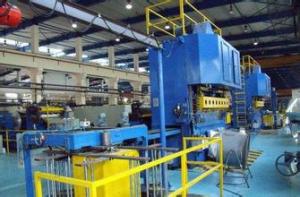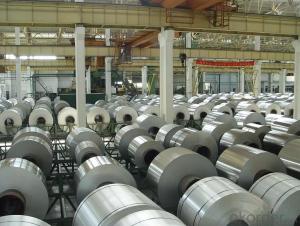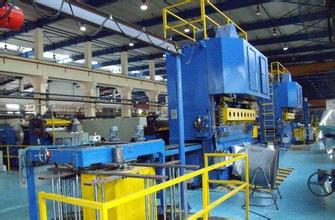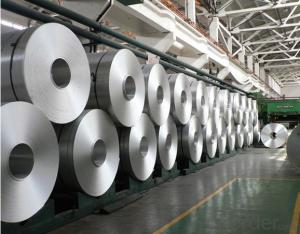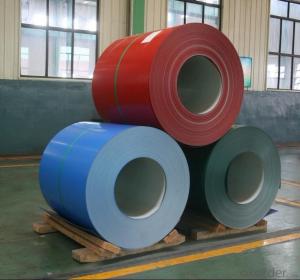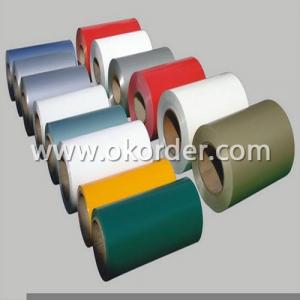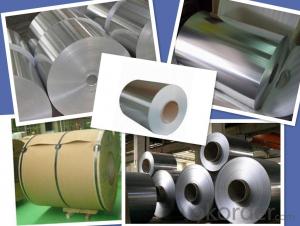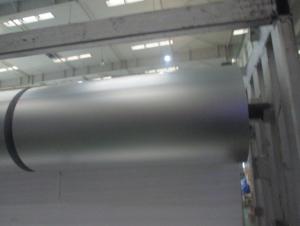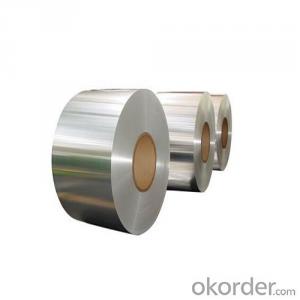Competitive Quality Roll Aluminum Coil at Low Prices
- Loading Port:
- Shanghai
- Payment Terms:
- TT OR LC
- Min Order Qty:
- 5 m.t.
- Supply Capability:
- 100000 m.t./month
OKorder Service Pledge
OKorder Financial Service
You Might Also Like
1.Structure of Aluminum Coil in Low Price and Competitive Quality:
Mill Finished Aluminum Coil is designed for many field such as electronics, instruments, lighting decoration, packing industry, and house decoration, curtain wall, honeycomb-core panel, sandwich panel, aluminum composite panel, aluminum composite pipe etc.. Mill finished aluminum coil for is hard and everlasting under the blazing sun. You can choose the alloys as your habitation and we will do our best to meet your requests.
2.Main Features of the Aluminum Coil in Low Price and Competitive Quality:
• Smooth surface
• High manufacturing accuracy
• High strength of extension and yield
• Well packaged
• No marks, no scratch, no excessive oil
3. Aluminum Coil in Low Price and Competitive Quality
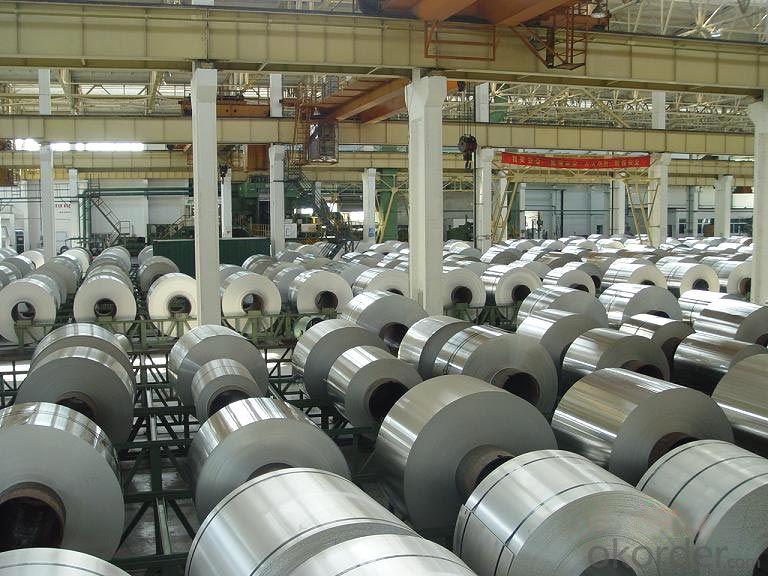
Alloy: | AA1050, 1060, 1070, 1100, 3003, 3004, 3005, 3105, 5052, 5083, 5754, 8011, 8006 |
Temper: | H14, H16, H18, H22, H24, H26, H32, O/F |
Thickness: | 0.2-100mm |
Width: | 30mm-1700mm |
4. Production of Aluminum Coil in Low Price and Competitive Quality
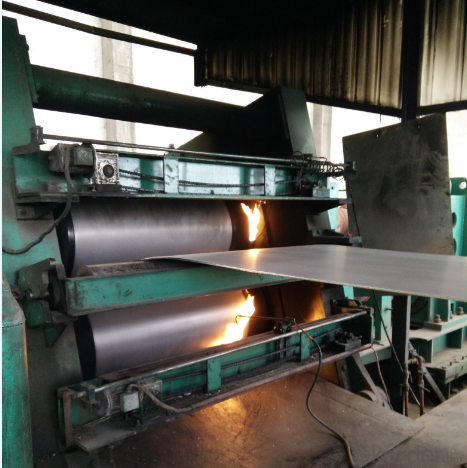
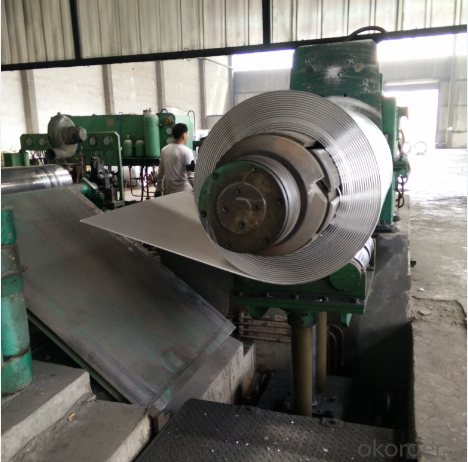
5.FAQ
We have organized several common questions for our clients,may help you sincerely:
① How about your company?
A world class manufacturer & supplier of aluminum coil and alloy blanks. Aluminum production base is comprised of 18 aluminum annealers, 10 coil and foil mills, 4 continuous production lines, 2 hot rolling production line and 3 prepainted lines.
Export 5000 tons per month to Asia, America and Middle East. Always do the best for our clients.
②Can you guarantee the quality of the products?
We are responsible for the quality of materials to get a long-term cooperation with clients in a reasonable period of time and we are glad to arrange and coordinate any third party inspection for you.
③What is the delivery time after purchase?
35 day after receiving client’s deposit or correct LC
- Q: I know aluminum has gone up in price. I know very little about gutter material. Durability, leaf guards, etc. I am on a limited income, and need the most and best for my few bucks. Thanks Lee
- Go with aluminum seamless gutter ,plastic only comes in 10 ft lenghts so you would have more seams which means more chances of it leaking A easy formula to figure out whataluminumn gutter will cost is and it goes by linear footage so measure your house where gutters would go and then add 12 LF for each downspout you will need about 4 and you have the total and if you call a contractor they will give you a free estimate but it should cost you about $2-$3 a Linear foot everyone is hurting for work so get a couple bids and go back and forth for the best price Also leaf guard is expensive about $4 a LF look for similar products that are cheaper hope this helps
- Q: I know it's almost 100% aluminum, but not completely. Does it have any impurities? I need to find the molar mass of aluminum foil.
- just use aluminum and goto the periodic table of elements. its all aluminum. they used to make it of tin.
- Q: What is the corrosion resistance of aluminum coils?
- Aluminum coils have excellent corrosion resistance due to the formation of a protective oxide layer on their surface. This oxide layer acts as a barrier, preventing further corrosion and making aluminum coils highly resistant to various environmental conditions and corrosive elements.
- Q: Is it safe and effective to use aluminum coil for baking purposes?
- <p>Yes, aluminum coil can be used for baking. It is a common material in baking due to its excellent heat conductivity, which allows for even heating and browning of baked goods. However, it's important to ensure that the aluminum coil is food-grade and clean to avoid any contamination. Additionally, some people may be concerned about potential health risks associated with aluminum, although these concerns are generally considered minimal when using aluminum cookware for baking.</p>
- Q: What are the different coil widths available for aluminum coils?
- The available coil widths for aluminum coils may vary based on specific requirements and manufacturing capabilities. However, typical coil widths for aluminum coils range from 12 inches (304.8 mm) to 60 inches (1524 mm). These standard widths are commonly utilized in construction, automotive, and packaging industries. Custom coil widths, narrower or wider than the standard range, can also be provided by manufacturers to meet specific customer needs. This allows for increased flexibility in design and application. It is important to acknowledge that the availability of specific coil widths may differ depending on the supplier and the aluminum alloy used. Therefore, it is advisable to consult a reputable aluminum coil supplier to determine the exact range of coil widths available for a particular project or application.
- Q: aluminium plate - 1800mm x 950mm x 1.5mmprocesses - i) sandblasting ii) polyethylene coating iii) matt blastingWhy does aluminium plate warp after the first process?How to prevent warping? Other than increasing material thickness (weight issue)
- If you can, try and get ceramic plates, they are sooooooo much better than titanium or aluminum because they don't cause as much damage to your hair. But, if you have to choose between titanium or aluminum, go with titanium. The only thing aluminum will do for your hair is fry it and give it split ends. Please don't waste your money on a straightener with alumium plates, :)
- Q: What are the differences among various types of steel wires and their respective coiling techniques?
- <p>Yes, there are differences between different types of steel wires and their coiling methods. Steel wires can be categorized based on their composition, strength, and use, such as carbon steel, stainless steel, and alloy steel wires. Each type has unique properties that affect their coiling methods. For instance, carbon steel wires are strong and ductile, suitable for standard coiling techniques, while stainless steel wires offer corrosion resistance and may require special handling to prevent damage. The coiling methods also vary; some common ones include spool coiling, loop coiling, and pancake coiling. Each method has specific applications and considerations for wire diameter, tension, and storage. Understanding these differences is crucial for selecting the appropriate wire and coiling technique for a given application.</p>
- Q: What is the bending radius for aluminum coils?
- The bending radius for aluminum coils can vary depending on several factors such as the thickness and temper of the aluminum, as well as the specific alloy being used. Generally, aluminum coils can be bent to a relatively small radius compared to other materials due to its high ductility and malleability. However, it is important to consult the manufacturer's guidelines or specifications for the specific aluminum coil being used to determine the recommended bending radius. This will ensure that the bending process does not exceed the material's limits and result in undesirable deformation or damage.
- Q: Can aluminum coils be used in packaging industries?
- Yes, aluminum coils can be used in the packaging industry. Aluminum is a popular choice for packaging materials due to its numerous advantageous properties. It is lightweight, durable, corrosion-resistant, and has excellent thermal conductivity. These qualities make aluminum coils suitable for various packaging applications, such as food and beverage packaging, pharmaceutical packaging, and cosmetic packaging. Additionally, aluminum is highly recyclable, making it an environmentally friendly choice for the packaging industry. Overall, aluminum coils offer excellent performance and versatility, making them a suitable option for packaging industries.
- Q: Are there any safety concerns when handling aluminum coils?
- Yes, there are safety concerns when handling aluminum coils. Aluminum coils can be sharp and may cause cuts or injuries if mishandled. Additionally, aluminum coils may contain sharp edges or burrs which can pose a risk of injury. It is important to handle them with proper protective equipment such as gloves and ensure safe lifting techniques to avoid any accidents.
Send your message to us
Competitive Quality Roll Aluminum Coil at Low Prices
- Loading Port:
- Shanghai
- Payment Terms:
- TT OR LC
- Min Order Qty:
- 5 m.t.
- Supply Capability:
- 100000 m.t./month
OKorder Service Pledge
OKorder Financial Service
Similar products
Hot products
Hot Searches
Related keywords
